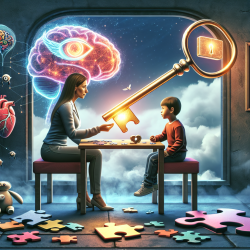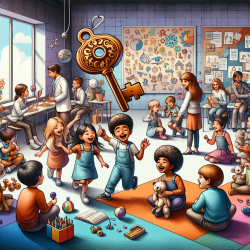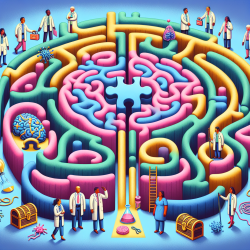As practitioners dedicated to fostering the well-being of children, we are always seeking innovative approaches to improve our practice. One groundbreaking research article, "Integrating Biobehavioral and Environmental Components of Developmental Psychopathology via Interpersonal Dynamics: An RDoC-Advancing Model," offers compelling insights into how caregiver-child dynamics shape child development and psychopathology. This blog will distill key findings from the study and provide actionable steps for practitioners.
Understanding Caregiver-Child Dynamics
Caregiver-child dynamics refer to the temporal coordination of biological, behavioral, and experiential processes between caregivers and children during social interactions. These dynamics play a crucial role in shaping children's socioemotional and brain development. By examining these dynamics, we can gain a deeper understanding of how early experiences with caregivers impact children's neurodevelopment.
Key Findings from the Research
The study highlights several important aspects of caregiver-child dynamics:
- Brain Circuits: Brain-to-brain synchronization occurs during caregiver-child interactions, often measured using EEG and fNIRS methods.
- Physiology: Coordination in physiological systems, such as heart rate and cortisol levels, is evident in caregiver-child interactions.
- Behavior: Synchrony in gaze, eye contact, vocalizations, and facial expressions is observed during interactions.
- Self-Report: Subjective experiences, such as shared intentionality, can be assessed using video-mediated recall paradigms.
Practical Steps for Practitioners
Based on these findings, here are some practical steps you can take to incorporate caregiver-child dynamics into your practice:
- Use Multiple Assessment Paradigms: Evaluate caregiver-child interactions across different contexts, such as conflict discussions and positive event-planning tasks, to capture a comprehensive picture of their dynamics.
- Leverage Real-Time Data: Utilize real-time data collection methods, such as wearable technology, to assess physiological synchrony during interactions.
- Provide Dyadic Feedback: Offer feedback to both caregivers and children about their interactions, using techniques like video feedback to highlight areas of strength and opportunities for improvement.
- Implement Family-Centered Interventions: Design interventions that focus on enhancing adaptive bidirectional dynamics, such as teaching constructive emotion socialization skills and promoting mindful awareness.
Encouraging Further Research
While this study provides valuable insights, it also underscores the need for further research to fully understand the complexities of caregiver-child dynamics. Practitioners are encouraged to engage in or support research efforts that explore these dynamics across different populations and contexts.
Conclusion
By integrating the insights from this research into your practice, you can enhance your ability to support the socioemotional and neurodevelopmental well-being of children. To read the original research paper, please follow this link: Integrating Biobehavioral and Environmental Components of Developmental Psychopathology via Interpersonal Dynamics: An RDoC-Advancing Model.










